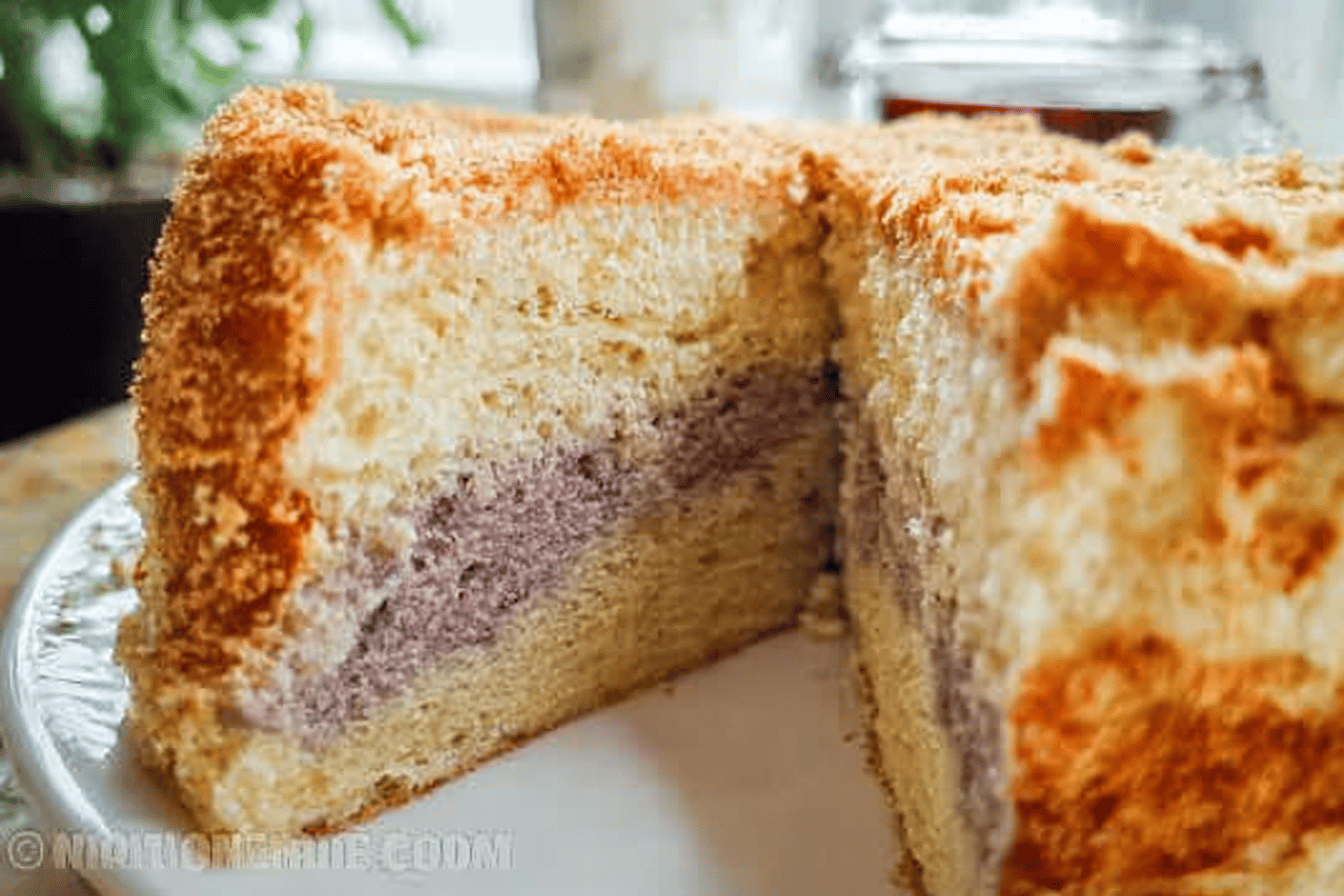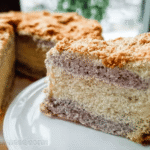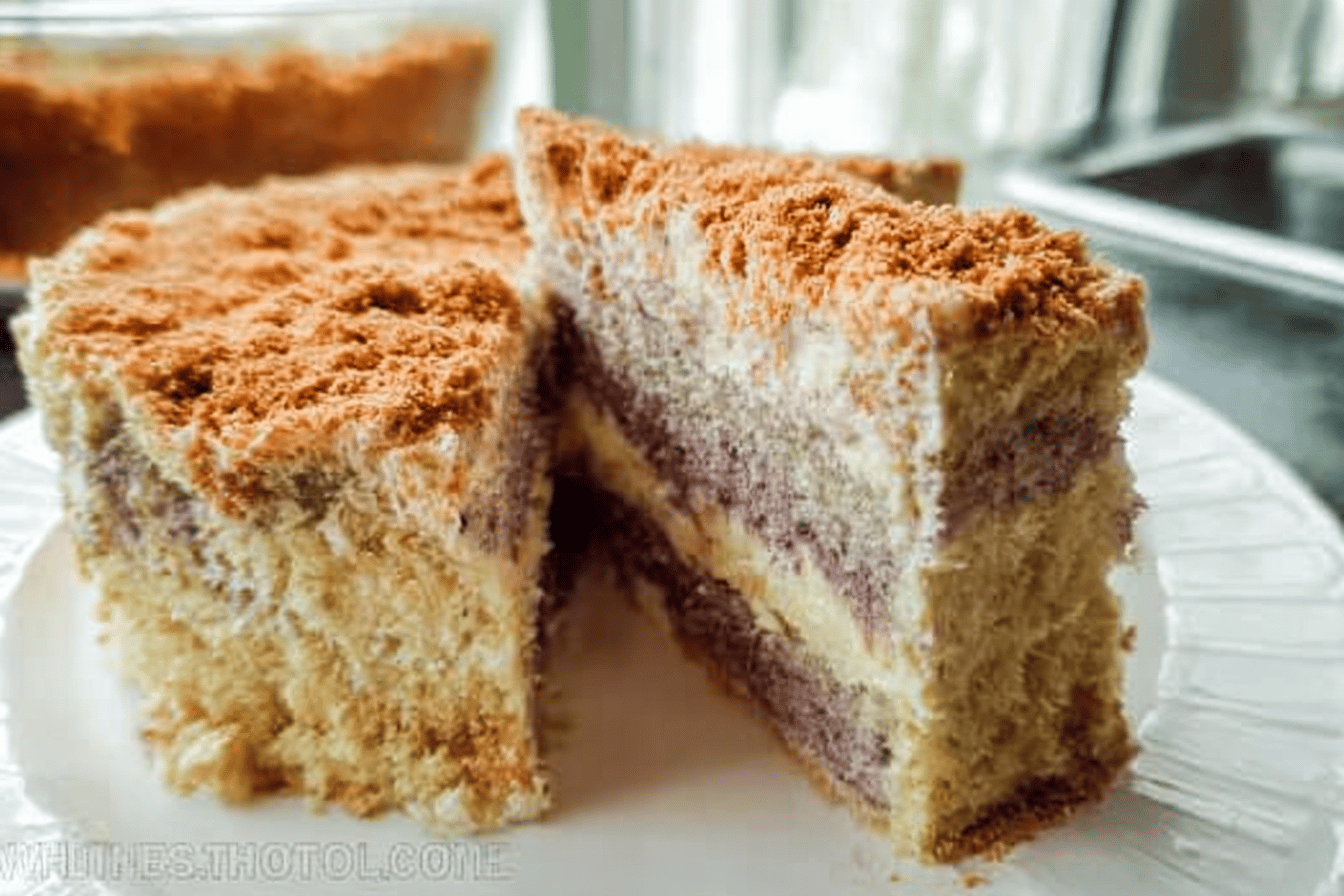Why You’ll Love This Biskvit Russian Cake
This Biskvit Russian Cake is a delightful treat that brings a touch of tradition to your kitchen with its moist sponge layers. You’ll appreciate how easy it is to whip up, using simple ingredients like flour, eggs, and sugar for a quick bake. Its unique red wine syrup soak adds a special flavor that makes every bite feel special.
One reason this cake stands out is its straightforward preparation, perfect for bakers of all levels. The recipe takes about one hour total, letting you enjoy a homemade dessert without much fuss. Plus, it keeps well in the fridge for several days, staying moist and ready for whenever you need a sweet moment.
Beyond ease, this cake offers nutritional perks from its wholesome base. Made with natural components, it’s a smarter choice for those watching their diet, and you can tweak the syrup for preferences like cutting back on sugar. What really sets it apart is its adaptability, allowing swaps for vegan or gluten-free needs while keeping that fluffy texture intact.
The distinctive taste comes from the red wine syrup that soaks into the sponge, creating a rich and memorable experience. Whether you’re a busy parent or a baking enthusiast, this cake inspires joy and brings people together around the table. For more ideas on simple cakes, check out our blueberry cream cheese crumb cake recipe for another easy favorite.
Jump To
- 1. Why You’ll Love This Biskvit Russian Cake
- 2. Essential Ingredients for Biskvit Russian Cake
- 3. How to Prepare the Perfect Biskvit Russian Cake: Step-by-Step Guide
- 4. Dietary Substitutions to Customize Your Biskvit Russian Cake
- 5. Mastering Biskvit Russian Cake: Advanced Tips and Variations
- 6. How to Store Biskvit Russian Cake: Best Practices
- 7. FAQs: Frequently Asked Questions About Biskvit Russian Cake
- 8. Biskvit Russian Cake
Essential Ingredients for Biskvit Russian Cake
Gathering the right ingredients is key to making this Biskvit Russian Cake turn out perfectly. This section lists everything you need, starting with the main components for the cake and syrup. I’ll break it down clearly so you can follow along without any confusion.
For the cake layers, focus on these precise measurements to achieve that moist sponge texture:
- 1 1/4 cups all-purpose flour
- 10 eggs
- 1 cup sugar
- 1 teaspoon vanilla
Now, for the red wine syrup that soaks and flavors the cake, you’ll need:
- 3/4 cup water
- 3/4 cup red wine
- 1/4 cup sugar
- 1 tablespoon lemon juice
These ingredients form the heart of the recipe, ensuring a light and airy result. For special dietary options, you can make swaps like using gluten-free flour or flaxseed for eggs to fit various needs. Visit our Cookies and Cream Oreo Cake for more inspiration on adapting recipes.
How to Prepare the Perfect Biskvit Russian Cake: Step-by-Step Guide
Creating this Biskvit Russian Cake is straightforward and fun, with steps that lead to a fluffy, soaked sponge. Start by preheating your oven to 350°F and preparing two pans, as this recipe makes two layers. Follow these steps carefully for the best outcome.
First, beat the egg whites until they are foamy but not overbeaten, then gently fold them into the yolk mixture that’s combined with the sugar, vanilla, and flour. Divide the batter evenly between the two pans and bake for 20-25 minutes until the cakes turn golden. Once baked, let them cool slightly, trim the edges, and save those pieces to toast into crumbs for garnish.
Next, prepare the syrup by mixing 3/4 cup water, 3/4 cup red wine, 1/4 cup sugar, and 1 tablespoon lemon juice until the sugar dissolves completely. Soak each cooled cake layer in this syrup to add moisture and flavor. Finish by frosting with Russian buttercream and sprinkling the toasted crumbs on the sides and top for a nice touch.
Remember key tips like gently folding the batter to keep it fluffy and removing any wax paper while the cakes are still warm for easy peeling. The whole process takes about one hour, making it ideal for busy days. If you enjoy this method, explore external resources for more on traditional baking techniques to enhance your skills.
Additional Tips for Baking Success
To adjust for dietary preferences, modify the syrup as needed, such as using non-alcoholic wine. This ensures everyone can enjoy the cake without issues. With practice, you’ll master this recipe and create memorable desserts every time.
Dietary Substitutions to Customize Your Biskvit Russian Cake
Making this Biskvit Russian Cake adaptable means you can tweak it for different diets while keeping its essence. For instance, if you’re aiming for a vegan version, swap the eggs with flaxseed mixtures to maintain that light texture. The red wine syrup can also be adjusted by using alternatives like grape juice for those avoiding alcohol.
Protein and main component alternatives include replacing eggs with aquafaba for extra fluffiness. For vegetable and seasoning modifications, try adding fruit purees or spices like those in other recipes. These changes let you personalize the cake without losing its moist, spongy quality.
Here’s a quick table to summarize common substitutions:
| Original Ingredient | Substitution | Reason |
|---|---|---|
| 10 eggs | Flaxseed eggs or aquafaba | For vegan diets |
| All-purpose flour | Gluten-free flour blend | For gluten-free needs |
| Red wine in syrup | Grape juice | For alcohol-free options |
This flexibility makes the cake inclusive for everyone, from students to seniors. It’s a great way to experiment and find your perfect version.
Mastering Biskvit Russian Cake: Advanced Tips and Variations
Once you’re comfortable with the basics, dive into advanced techniques to elevate your Biskvit Russian Cake. For instance, use a water bath when baking to ensure even cooking and prevent cracking, which helps maintain that perfect golden finish. Whipping the egg whites separately maximizes volume, leading to an even fluffier result.
Flavor variations can include adding citrus zest or almond essence to the batter for a fresh twist. You might also layer in fruit jam or chocolate ganache, drawing from ideas like those in our other recipes. Presentation tips involve dusting with powdered sugar or topping with berries for an elegant look that impresses at any gathering.
Make-ahead options are handy for busy professionals; prepare the batter in advance and store it, or bake the layers and freeze them. The cake holds up well, staying moist for days in the fridge. For more on creative cakes, check out our chocolate peanut butter poke cake for flavor ideas.
Storage and Prep Hacks
Saving trimmed edges for crumbs is a smart tip to reduce waste and add a custom garnish. Gently folding the batter preserves its lightness, ensuring your cake turns out just right every time.
How to Store Biskvit Russian Cake: Best Practices
Proper storage keeps your Biskvit Russian Cake fresh and tasty for longer. Place it in an airtight container in the fridge for up to 3-4 days, as its moist texture holds up well without getting soggy. This method is simple and effective for enjoying leftovers.
For longer-term options, wrap the cake tightly and freeze it for up to 2 months, then thaw in the fridge overnight. Reheating slices in the microwave restores softness while keeping the flavors intact. Meal prep lovers can bake extras and freeze portions for quick treats on busy days.
This cake’s ability to stay fresh makes it a reliable choice for any occasion, as shared in many family traditions.

FAQs: Frequently Asked Questions About Biskvit Russian Cake
What ingredients are typically used to make a Biskvit Russian Cake?
A classic Biskvit Russian Cake is made from simple ingredients including eggs, sugar, flour, and sometimes a small amount of baking powder or cornstarch to lighten the batter. The cake layers are usually light and airy, resembling a sponge cake. For the filling and frosting, traditional recipes often use a combination of sour cream, sweetened condensed milk, or buttercream, sometimes with added nuts or cocoa powder for flavor. These basic components create the characteristic soft texture and balanced sweetness of the Biskvit cake.
How do you achieve the light and fluffy texture in a Biskvit Russian Cake?
The light and fluffy texture of a Biskvit cake is mainly achieved by properly whipping the eggs and sugar. The eggs should be beaten until the mixture is pale and thick, which incorporates air and helps the cake rise without heavy leavening agents. Gently folding in the sifted flour without deflating the egg mixture is essential. Baking at the correct temperature (usually around 160–170°C or 320–340°F) ensures the cake sets without drying out. This method produces the tender crumb that Biskvit cakes are known for.
Can I make Biskvit Russian Cake gluten-free?
Yes, you can make a gluten-free Biskvit Russian Cake by substituting all-purpose flour with gluten-free flour blends designed for baking. Almond flour or a mix of rice flour and potato starch can also work, but it may slightly change the texture. Because gluten-free flours behave differently, be sure to add a binding agent like xanthan gum if your blend doesn’t include it. Adjusting the baking time and carefully folding the ingredients will help maintain the cake’s characteristic lightness.
How should I store Biskvit Russian Cake to keep it fresh?
Biskvit Russian Cake is best stored in the refrigerator because it often contains dairy-based fillings like sour cream or buttercream. Wrap the cake tightly in plastic wrap or store it in an airtight cake container to prevent it from drying out or absorbing fridge odors. It will stay fresh for up to 3-4 days. For longer storage, you can freeze the cake layers (unfrosted) in airtight packaging and thaw them at room temperature before assembly.
What are some common variations of the Biskvit Russian Cake?
Common variations of Biskvit Russian Cake include adding cocoa powder to the batter for a chocolate flavor or incorporating chopped nuts like walnuts or hazelnuts into the layers. Some recipes substitute sour cream for sweetened condensed milk in the filling for a tangier taste. Fruit preserves or fresh berries can also be layered with the cream for added freshness. These variations allow for personalization while maintaining the cake’s soft and airy qualities.

Biskvit Russian Cake
- Total Time: 45 minutes
- Yield: 8-10 servings
- Diet: Vegetarian
Description
🍰 Biskvit Russian Cake offers a moist and fluffy sponge paired with rich red wine syrup and traditional Russian buttercream.
🍷 Its layered texture and flavorful syrup make it a delightful homemade dessert perfect for special occasions or everyday indulgence.
Ingredients
– 1 1/4 cups all-purpose flour
– 10 eggs
– 1 cup sugar
– 1 teaspoon vanilla
– 3/4 cup water
– 3/4 cup red wine
– 1/4 cup sugar
– 1 tablespoon lemon juice
Instructions
1-Preheat your oven: Preheat your oven to 350°F and prepare two pans, as this recipe makes two layers.
2-Beat the egg whites: Beat the egg whites until they are foamy but not overbeaten, then gently fold them into the yolk mixture that’s combined with the sugar, vanilla, and flour.
3-Divide and bake: Divide the batter evenly between the two pans and bake for 20-25 minutes until the cakes turn golden. Once baked, let them cool slightly, trim the edges, and save those pieces to toast into crumbs for garnish.
4-Prepare the syrup: Prepare the syrup by mixing 3/4 cup water, 3/4 cup red wine, 1/4 cup sugar, and 1 tablespoon lemon juice until the sugar dissolves completely.
5-Soak cake layers: Soak each cooled cake layer in this syrup to add moisture and flavor.
6-Frost and garnish: Finish by frosting with Russian buttercream and sprinkling the toasted crumbs on the sides and top for a nice touch.
Notes
🍳 Gently fold the batter to keep it light and fluffy.
🔥 Remove parchment from warm cakes to avoid sticking.
🥄 Save trimmed edges and toast as crumbs for decorative garnishing.
- Prep Time: 20 minutes
- Cook Time: 25 minutes
- Category: Dessert
- Method: Baking and assembling
- Cuisine: Russian
Nutrition
- Serving Size: 1 slice
- Calories: 340 kcal
- Sugar: 28 g
- Sodium: 120 mg
- Fat: 18 g
- Saturated Fat: 11 g
- Trans Fat: 0 g
- Carbohydrates: 32 g
- Protein: 6 g
- Cholesterol: 140 mg
Keywords: Biskvit cake, Russian cake, Red wine syrup cake, Classic buttercream dessert


